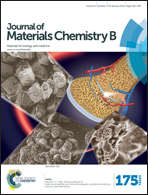Ginsenoside nanoparticle: a new green drug delivery system
Abstract
A large amount of chemosynthetic nano-drug carrier has to be used to administer a needed dose of a drug. However, high doses of these excipients may cause the emergence of toxic potential to patients. Green chemistry aims to develop green nanoparticles loaded with drugs to reduce the use of toxic and harmful ingredients in the production process and provide lower-dose prescriptions for medical treatments. The use of non-toxic materials in pharmaceutical formulations could minimize the adverse effects of pharmaceutical residues entering the body and environment. Ginsenoside is the main bioactive constituent of the herb Panax ginseng. Here, we firstly find that ginsenoside Rb1 can self-assemble with anticancer drugs to form stable nanoparticles, which have greater anticancer effects in vitro and in vivo than the free drugs. The obtained nanoparticles possessed an appropriate size (∼100 nm), better tumor selectivity, high drug loading capacity (∼35 wt% betulinic acid, ∼32 wt% dihydroartemisinin, and ∼21 wt% hydroxycamptothecine), and a higher blood circulation half-time. Furthermore, the antitumor effect of the nanoparticles in a mouse tumor xenograft model exhibited a much better tumor inhibition efficacy and fewer side effects than those of the free drugs, strongly supporting their application as a novel efficient nanocarrier for anticancer therapy. Moreover, ginsenoside nanoparticles with a simple, green preparation method and easy large-scale production are promising for the delivery of various insoluble drugs.


 Please wait while we load your content...
Please wait while we load your content...